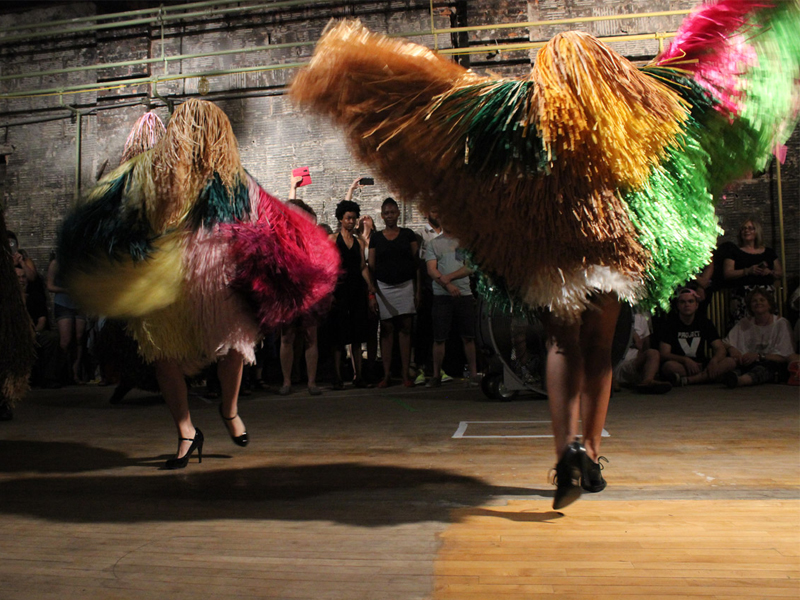Social activism and activist art are generally not known for having a “gentle touch”—unless one has a social media presence equal to the Dalai Lama’s, a quiet voice is rarely heard. At the same time, overt, heavy-handed messages addressing the failures of society are rarely experienced as “enjoyable.”
Nick Cave’s Soundsuits operate on numerous levels. In performance, they are functional, wearable costumes that charge the atmosphere, creating a palpable, visceral experience that entrances the audience, and a transformative, ritualistic experience for the wearer/performer. As static objects installed in a gallery, they present themselves for inspection—vibrant, totemic sculptures dominating the space. In both contexts they explode with color, tactile invitation, and visual delight.
The Soundsuits are fun. They are fun to look at and fun to be around, which makes for a jarring juxtaposition with their origin story. In her recent article for Hyperallergic, Sarah Rose Sharp describes how Cave first developed the Soundsuits while a postgraduate at Cranbrook Academy of Art as a means to process his response to the Rodney King beating.
Much like Adeela Suleman’s Stainless Steel Helmet with Kettle, Cave’s Soundsuits are energetic constructions worn like armor—both protecting and obscuring the identity of the wearer, granting new power while creating new vulnerabilities. In the face of conflict—unchecked prejudice, unchecked privilege, unchecked rage—one suits up for the challenge, to fight with joy.
Cave’s newest body of work, Made by Whites for Whites—assemblages of found racist folk art objects—is a “visual essay” in a sense, moving deeper into the same issues that inspire the Soundsuits. But even these inflammatory, derogatory objects are dealt with and presented with a sense of delicacy and gentleness; as Cave explains, “It provides me this way of tackling really hard issues, but in a way where I’m taking you by the hand on a journey, where you and I can have a one-to-one conversation. It’s not about me being angry, it’s not about me filled with frustration. It’s just really sort of using these objects as a teaching tool.”
What’s most provocative about Cave’s body of work is the absence of anger. Rage, disempowerment, and deep, deep hurt are transformed into charged, compelling objects, and wearable pieces worn in actual community interaction. Racism, tragedy, and suffering are dealt with in a way that is both intense and subtle, choosing to invite further conversation rather than incite further anger.





